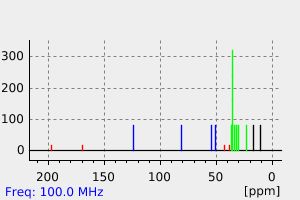毒理性
哺乳期使用概述:有限的数据表明,给哺乳期母亲皮下植入低剂量(100毫克)的睾酮药丸,似乎不会显著增加乳汁中的睾酮水平。然而,睾酮的口服生物利用度较低,因为首次通过肝脏代谢广泛,所以它似乎不会增加哺乳婴儿的血清睾酮水平。哺乳婴儿似乎不会受到母体或跨性别父体睾酮治疗的负面影响。高剂量的睾酮可以抑制泌乳。
对哺乳婴儿的影响:在产后母亲皮下植入100毫克睾酮药丸后,她的婴儿(年龄未说明)被哺乳(程度未说明)。在5个月的时间里,婴儿没有出现不良反应。
一名跨性别男性在分娩后13.75个月开始每周接受50毫克的睾酮环戊丙酸酯。1个月后,剂量增加到每周80毫克。他的男婴部分时间接受“胸部喂养”(程度未说明),直到婴儿在开始使用睾酮后的137天(18个月大)自行断奶。在此期间,婴儿的儿科医生没有注意到任何不良事件或男性化的迹象。婴儿正常生长和发育。
对泌乳和乳汁的影响:无论是来自肿瘤还是外源性给予的睾酮,超生理水平的睾酮都会减少产后女性的乳汁产量。睾酮本身会降低血清催乳素水平;然而,当与雌激素和黄体酮联合使用时,血清催乳素水平并没有明显降低。过去,睾酮曾作为一种治疗手段用来抑制泌乳,通常与雌激素联合使用。
◉ Summary of Use during Lactation:Limited data indicate that a low-dose (100 mg) subcutaneous testosterone pellet given to a nursing mother appears not to increase milk testosterone levels markedly. Subcutaneous testosterone cypionate does increase milk testosterone levels. However, testosterone has low oral bioavailability because of extensive first-pass metabolism, so it appears to not increase serum testosterone levels in breastfed infants. Breastfed infants appear not to be adversely affected by maternal or transgender paternal testosterone therapy. High doses of testosterone can suppress lactation.
◉ Effects in Breastfed Infants:After implantation of a 100 mg pellet of testosterone subcutaneously in a postpartum mother, her infant (age not stated) was breastfed (extent not stated). No adverse effects were noted in the infant over a 5-month period.
A transgender male began receiving subcutaneous testosterone cypionate 50 mg weekly 13.75 months after giving birth. The dose was increased to 80 mg weekly after 1 month. His male infant was partially “chestfed” (extent not stated) until the infant self-weaned at 137 days after initiation of testosterone (18 months of age). During this time, no adverse events or signs of virilization were noted by the infant’s pediatrician. The infant grew and developed normally.
◉ Effects on Lactation and Breastmilk:Supraphysiologic serum levels of testosterone, either from a tumor or from exogenously administered testosterone, reduces milk production in postpartum women. Testosterone alone reduces serum prolactin; however, when given in combination with estrogen and progestin, serum prolactin levels are not markedly reduced. Testosterone was previously used therapeutically to suppress lactation, usually in combination with an estrogen.
来源:Drugs and Lactation Database (LactMed)







